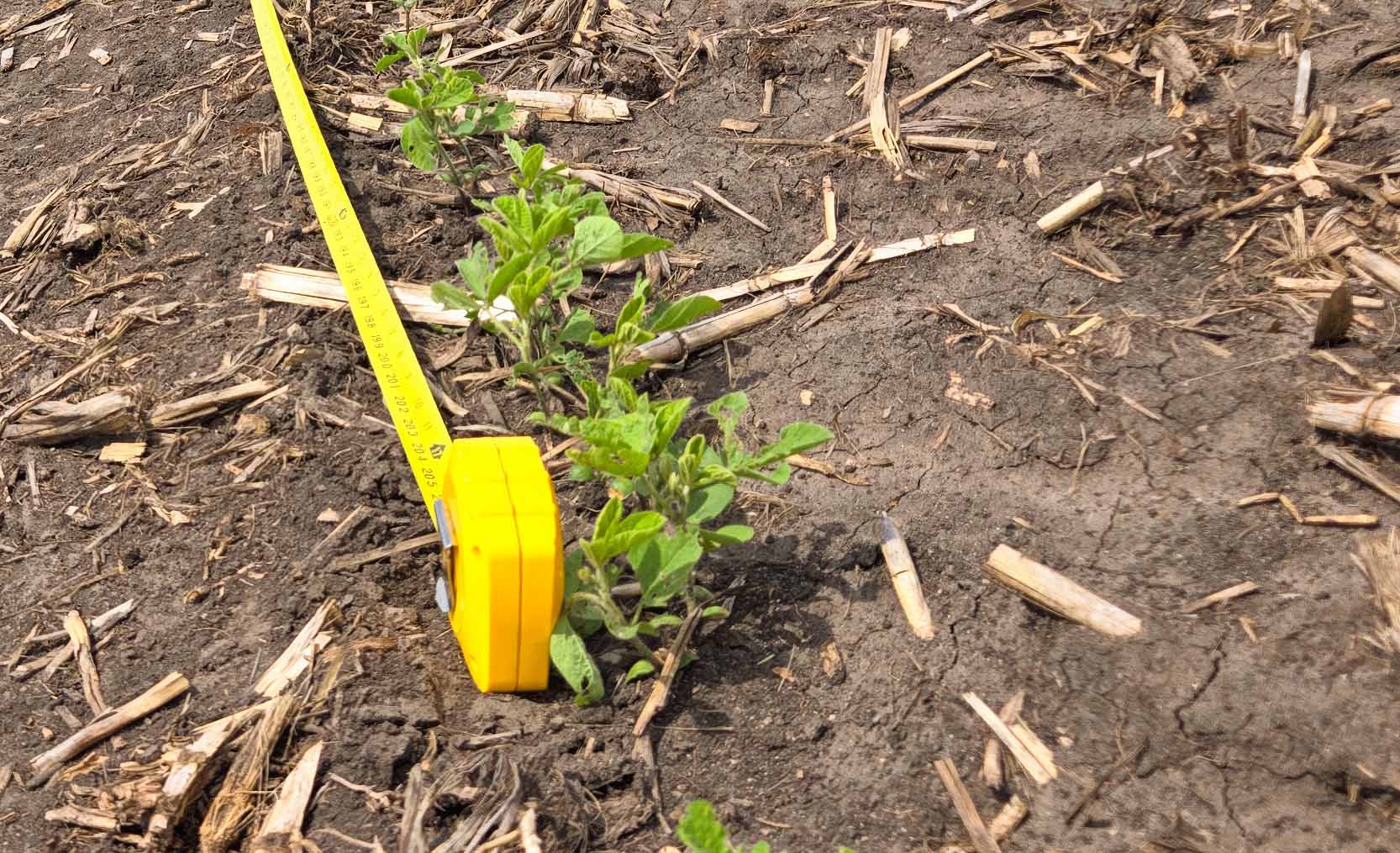
For assessing soybean plant stands, measure 17 ½ feet in a 30-inch row or 34 feet in a 15-inch row. Multiply the number of plants by 1,000 to find the plants per acre. (Photo: Iowa Soybean Association / Kriss Nelson)
Three steps for soybean stand evaluation
May 30, 2024 | Kriss Nelson
This spring's cooler and wetter conditions could cause delays and issues regarding soybean emergence.
Iowa Soybean Association research agronomist Mikaela Lawrence recommends farmers go into the fields and assess plant stands once soybeans emerge.
"Understanding the initial conditions in the field will help as we progress through the season," says Lawrence. "Sometimes, we fail to consider what happened during planting or the early conditions of the growing season when we observe any drastic changes to stands or low yields during harvest."
Assessing stands in soybeans
Step 1
To begin, one should measure 17 ½ feet in a 30-inch-wide row or 34 feet if soybeans are planted in 15-inch-wide rows.
Step 2
Count the number of plants and times that by 1,000 to calculate the number of plants per acre.
Step 3
It is necessary to perform this action in multiple areas of the field, excluding the same planter row and targeting locations with no missing plants. Stand counts prior to the rain would aid in the decision to replant if stands were significantly less, specifically those affected by water damage.
Stand assessment cont.
An economic ideal stand for soybeans in Iowa is roughly 110,000 plants per acre. Lawrence says a plant stand of less than 50% of the targeted planting population would be concerning as we enter June.
"If plant stands are low or uneven, it is important to understand why," says Lawrence. "Was it due to weather this spring, or were there other contributing factors such as herbicide injury, or mechanical damage from farm equipment?"
Unlike corn, if your stand is low, soybeans can use some of the extra space by branching out and developing more pods on those lateral growths.
Lawrence reminds growers to consider all factors before replanting, including the costs of additional inputs such as labor, seeds, herbicides, and the potential damage to other seedlings if they do not tear up the entire field.
"It is also important to remember, replanted beans are starting later in the season, and this delayed planting would already affect the yield under normal conditions," she says.
Besides plant stands, it is essential to monitor for early signs of seedling disease, weed and insect pressure, or any unusual occurrences at the beginning of the season. Especially this spring, some key diseases to look out for would be Pythium root rot and Phytophthora root and stem rot because of the warm, wet conditions.
Other diseases to keep an eye out for in warm and moist conditions are white mold and frogeye leaf spot.
"Having accurate records from early in the season can help recall the conditions in problematic areas," says Lawrence. "If a part of a field was especially wet at the beginning of the season, it could account for certain yield results. This information assists the research agronomists at ISA in analyzing planting and growing season conditions, identifying abnormalities in yield results, and making precise recommendations for the future."
Back